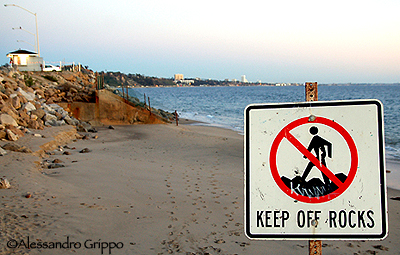 |
GEOL 31 - Physical Oceanography
Exam # 1 Study Guide - Fall 2017
exam date: Monday, September 25, 2017
Professor: Dr. Alessandro Grippo, Ph.D.
|
|
| |
| General Information | Last Updated • September 12, 2017 | |
PLEASE NOTE:

The southern California coast in Pacific Palisades, Los Angeles:
an example of a transform active margin.
| |
| Study Guide: LECTURE | Last Updated • September 12, 2017 | |
Introduction
review the Introduction powerpoint
Chapter 1 - Introduction to Planet "Earth"
Study the whole chapter
- Know the introduction to the chapter
- Know How Are Earth's Oceans Unique?
among other things, know the names of the oceans and their main characteristics
- Read How Was Early Exploration of the Oceans Achieved?
- Know What Is Oceanography?
- Read What is the Nature of Scientific Enquiry?
- Know How were Earth and the Solar System Created?
know in particular the section on Earth's Internal Structure
- Know How Were Earth's Atmosphere and Oceans Created?
- Know Did Life Begin in the Ocean?
- Know How Old is Earth?
Chapter 2 - Plate Tectonics and the Ocean Floor
review the Plate Tectonics powerpoint:
Study the whole chapter
- Know the introduction to the chapter
- Know What Evidence Supports Continental Drift?
be sure to know the four lines of evidence of Wegener and the objections to his theory
- Know What Evidence Supports Plate Tectonics?
- Know What Features Occur at Plate Boundaries?
be sure to know this section well
- Know Testing the Model: How Can Plate Tectonics Be Used as a Working Model?
- Know How Has Earth Changed in the Past, and How Will it Look in the Future?
Go back to the home page  Go back to the Fall 2017 page
Go back to the Fall 2017 page
|
|
|
| |
Copyright © since 1994, Alessandro Grippo, All Rights Reserved.
|


 Go back to the Fall 2017 page
Go back to the Fall 2017 page